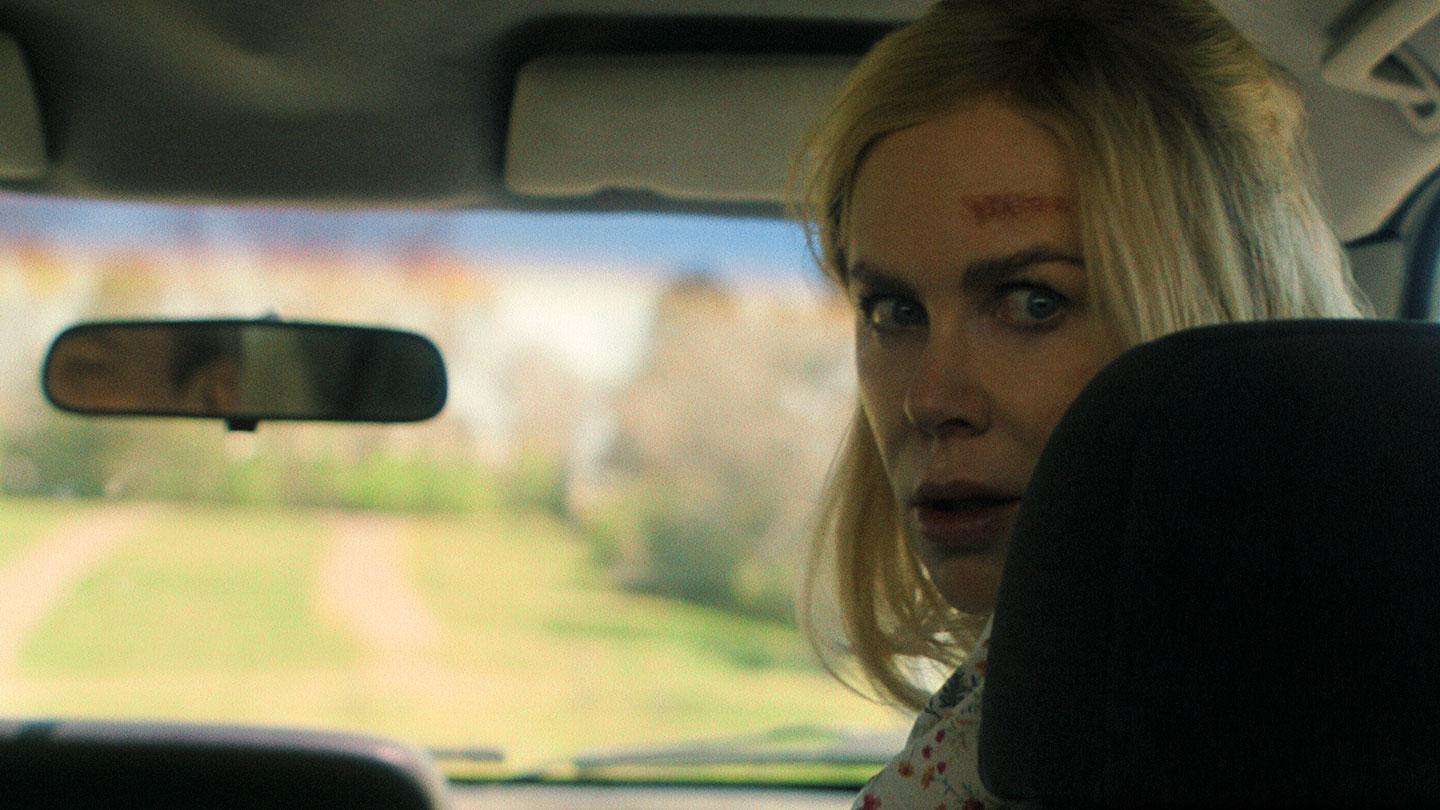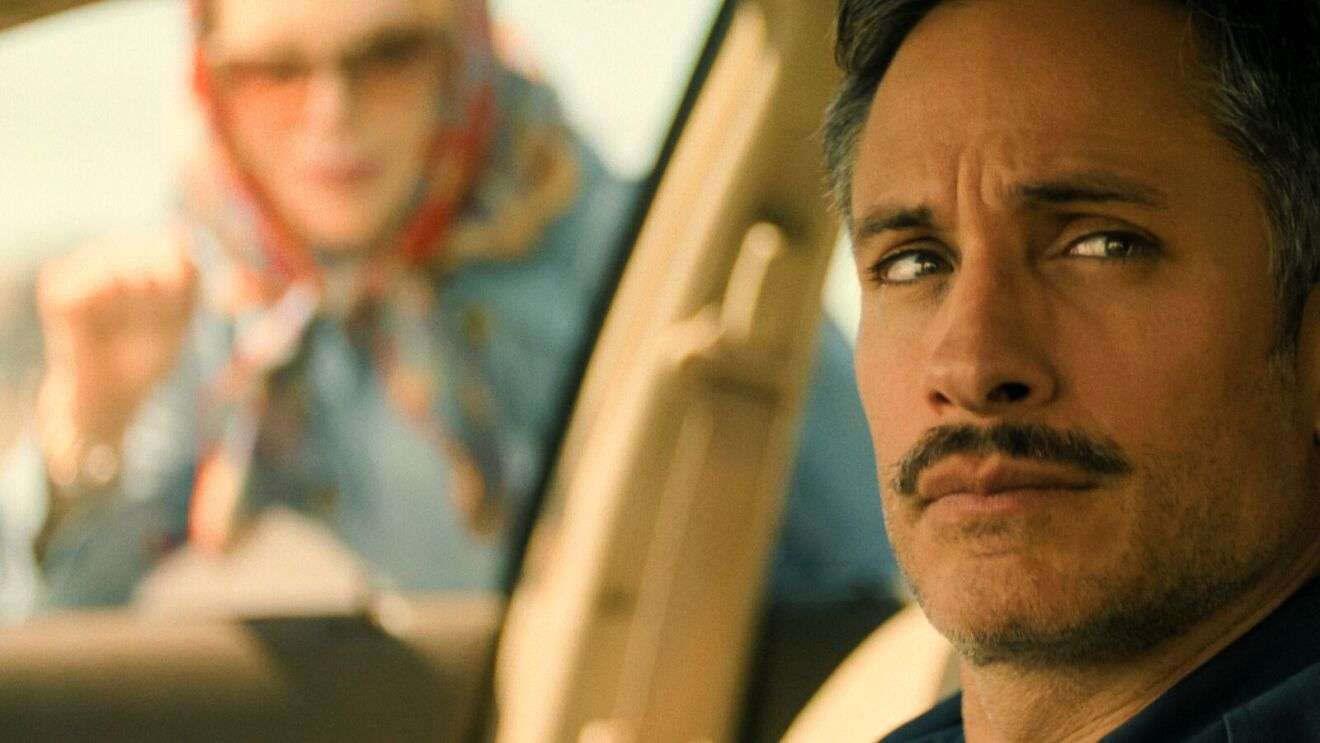Mimi Cave’s “Holland” needs a sub-title: I can’t believe it’s not Paul Schrader! It’s not just the way the film immerses itself into the Dutch-American culture of Western Michigan that’s traditionally been Schrader’s territory, but so much of it seems redolent of his primary thematic obsessions. It may even potentially be regarded as a feminist subversion of Schrader’s typical work, with Nicole Kidman’s heroine challenging the “toxic masculinity” (for the lack of a better word) that characterizes so many of his films, being especially reminiscent of “Hardcore” (1979) in many ways. Unfortunately, the story hangs not just on a predictable plotline, but it has nothing new or particularly insightful to say about small-town America either. What this movie really needed was a writer of Schrader’s caliber to freshen it up.
The story is set in the real-life city of Holland, Michigan (although, oddly enough, it was filmed far away from it, in Tennessee of all places) at the turn of the century. The turn of this century, that is, just when you hoped that the inane obsession with the Eighties had finally run its course, the film readies you to get equally sick of the inevitable Nineties nostalgia wave as well. The city itself is depicted as being even more flung backward in time, with much being made of its historical Dutch heritage; tulips, folded hats, and wooden clogs are ubiquitous presences, and the movie even goes as far as to recreate its actual Tulip Festival Parade.
Also Read: Babygirl (2024): Nicole Kidman Dominates In A Submissive Role of Tortured Desire
The resident of focus is schoolteacher and mother Nancy Vandergroot (Kidman), who enjoys a stereotypical picture-perfect marriage to an optometrist (Matthew MacFayden) who’s obsessed with his model train set that courses through the miniature, almost-exact replica of the town that he’s built in the basement. Otherwise, he seems like a nice and normal guy, but he starts going to an inordinate number of medical conferences in just a few months, which raises Nancy’s suspicions. Enlisting the help of a fellow teacher, David (Gael Garcia Bernal), she starts to investigate, and much like George C. Scott in “Hardcore,” as well as the male protagonists in both Schrader’s “American Gigolo” (1980) and “Blue Collar” (1978) finds herself over her head with much more than she bargained for as the result of her amateur sleuthing.
Trying to pound out a review of a film like “Holland” is an exercise in frustration; so many hoary cliches get trotted out that you need to monitor your own writing closely to make sure you don’t wind up doing the same. Yes, filmmakers, we get it, you have contempt for suburbia and for middle America, you don’t need to keep reminding us of the dark undercurrents lying beneath the pleasant façade or the ills its inhabitants so carefully hide. The real Holland, MI has enough troubling problems of its own already without being the target of manufactured ones as well.
The storyline itself is straight out of Crime Suspenstories, and what packs a punch in an eight-page comic book tale is rendered flabby when expanded into a 108-minute feature. Hitchcock fans will find it redolent of some his finest films, especially “Suspicion,” “Shadow of a Doubt” and “Rear Window,” and many others have also pointed out similarities to “Blue Velvet,” not just in style and attitude but in the way Kidman and Garcia Bernal serve as an older, gender-switched version of Kyle McLachlan and Laura Dern. One of my viewing companions even pointed out similarities to Bob Balaban’s 1988 cult item “Parents,” with Randy Quaid and Mary Beth Hurt holding even darker secrets.
“Holland” nonetheless remains watchable for two reasons: the expectedly terrific performances and Cave’s direction. At this point in her career, Kidman can play this sort of role in her sleep, and fortunately, she doesn’t; she’s a lot of fun to watch sleuthing even as the movie becomes less enjoyable as it progresses.
Both Garcia Bernal and MacFayden do well in supporting roles, being careful to stay in step with the offbeat rhythms of the storyline without making the mistake of over-exaggeration. MacFayden, especially, does excellent work at keeping us guessing at what sort of secret he may be hiding, even getting us to doubt at times that he’s hiding one at all. He makes a better choice than Bryan Cranston, who was originally cast in a part that’s too close in fundamentals to his most famous role in “Breaking Bad” and, therefore, would make us immediately suspicious that he’s somehow being deceptive, no matter what he does to try to conceal his intentions.

If the movie is a disappointment, it’s at least a great-looking one thanks to Mimi Cave’s clever and often imaginative direction, ably assisted by Pawel Pogorzelski’s cinematography and JC Molina’s production design. The entire film has an enticing candy store look to it that immediately catches our attention and is able to keep it despite the lapses in the storyline. There are also some memorable fantasy and nightmare sequences, including one that’s like a homage to “Ju-On: The Grudge,” only with puppies replacing cats. But good looks can only take a movie so far, and it’s not healthy to be locked in a candy store if there’s no source of real nourishment at hand.
In the end, the visual indulgences not only wind up highlighting the shallowness and tiredness of the storyline but the failure of the filmmakers to clarify and develop potentially interesting novel themes instead of the cliched ones at hand. For instance, why set the film in the year 2000? There’s no particular reason to do so, no reminder of any news item or such from the period that would provide a valid explanation in the context of the storyline, or that might add some thematic depth to the picture. The cynic in me says that Andrew Sodorski’s script simply spent so much time in Development Purgatory that no one bothered to update it when they finally got around to filming it.
A final criticism: much is made of Garcia Bernal’s character being the lone Mexican-American in the entire town. That might have worked if the film was set even earlier in the recent past, but by 2000, the real-life city of Holland was already over 20% Hispanic, and it is now almost a quarter as of this writing. America’s smaller cities are far more diverse than most people realize and have been that way for a long time; why do the movies always feel the need to portray them as ethnically and racially homogenous? Maybe the filmmakers wouldn’t have made such an erroneous assumption if they had actually bothered to film more of it in the actual Holland instead of Nashville.




![Jam [2019]: ‘NYAFF’ Review – A Fairly Enjoyable Collision Course](https://79468c92.delivery.rocketcdn.me/wp-content/uploads/2019/07/Jam-highonfilms-768x432.jpg)
![War Dogs [2016] : Todd Phillips is no Martin Scorsese](https://79468c92.delivery.rocketcdn.me/wp-content/uploads/2016/11/war-dogs-2016-768x403.jpeg)
![Cyrano [2022] Review – Joe Wright’s Gorgeously Crafted Musical Is A Sight To Behold](https://79468c92.delivery.rocketcdn.me/wp-content/uploads/2022/01/Cyrno-2022-768x512.jpg)
![Séance on a Wet Afternoon [1964] Review– A Visually Entrancing and Superbly Written Character Study](https://79468c92.delivery.rocketcdn.me/wp-content/uploads/2021/10/Seance-on-a-Wet-Afternoon-1964-768x432.jpg)

